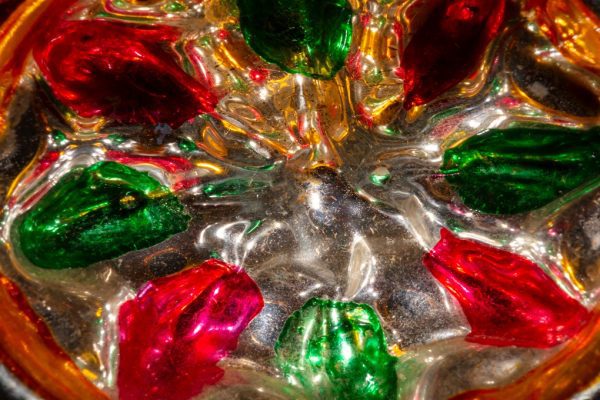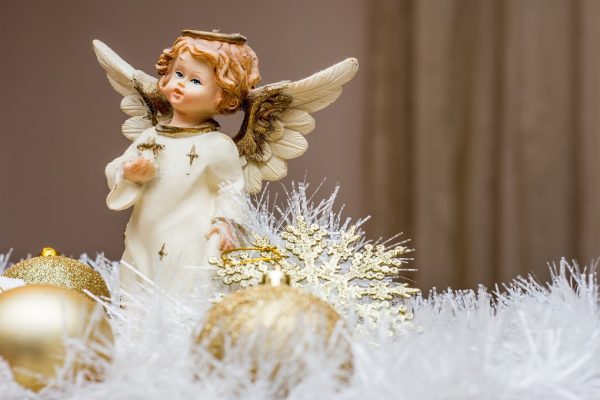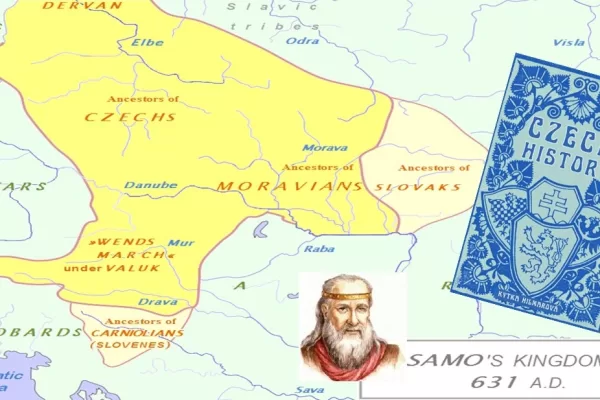Every year, in the days when winter slowly gives way to spring, something unusual takes place in the Eastern Bohemian Highlands of the Czech Republic. Villages such as Veselý Kopec and Hlinecko hold colourful and merry carnival processions. The Masopustní průvod translates to Shrovetide procession and the merrymakers travel from house to house, delivering joy, health and happiness to everyone they visit.
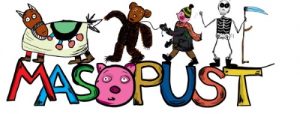 Masopust is a traditional Czech Mardi Gras type of celebration takes actually place in Czech communities all around the world. It occurs the first weekend before Lent.
Masopust is a traditional Czech Mardi Gras type of celebration takes actually place in Czech communities all around the world. It occurs the first weekend before Lent.
The history of this celebration reaches far back into the past, and thanks to strong tradition, which has been passed down from generation to generation, it has been added to the UNESCO List of Intangible Cultural Heritage.
Welcoming the Spring
Going all the way back to Pagan roots, the colorful masks symbolize the coming of spring, fertility and good harvest.
In the East Bohemian village of Hlinecko, the parade has remained unchanged for centuries. The highlights of this door-to-door Shrovetide procession include ritual dances, the wearing of black masks or faces marked symbolically with black grease, the consumption of Koblihy – Czech deep-fried donuts, and some incredibly bizarre headdresses, particularly towering wide-brimmed hats that are festooned with vibrantly colored flowers, ribbons, and pom poms—almost like a clown hat.
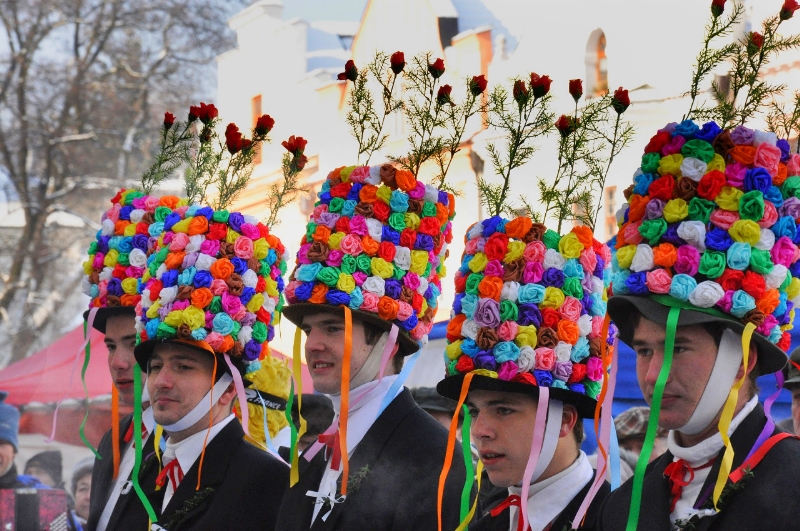
The ladies with brooms are sweeping away sorrows and welcoming the spring.
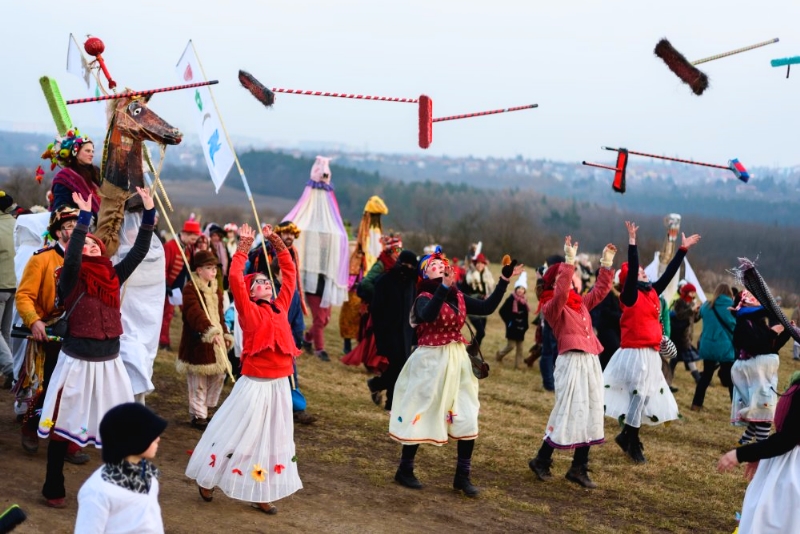
Masks are handed down from generation to generation and the costumes are brought out each year, repaired and made fresh again for each celebration. European festivities that include masks are probably much older than Masopust.
The parades of masked figures have their roots in pre-Christian period. They are associated with the turning point of the year, when winter changes into spring.
The Shrovetide procession that takes place in Hlinecko have kept their traditional form from the first half of the 19th century.
Shrovetide is a three-day festival which takes place before Ash Wednesday. This celebration begins the 40 days of Lent, which ends on Easter.
Like Easter, this feast is movable – it can happen any time between February 1 and March 7.
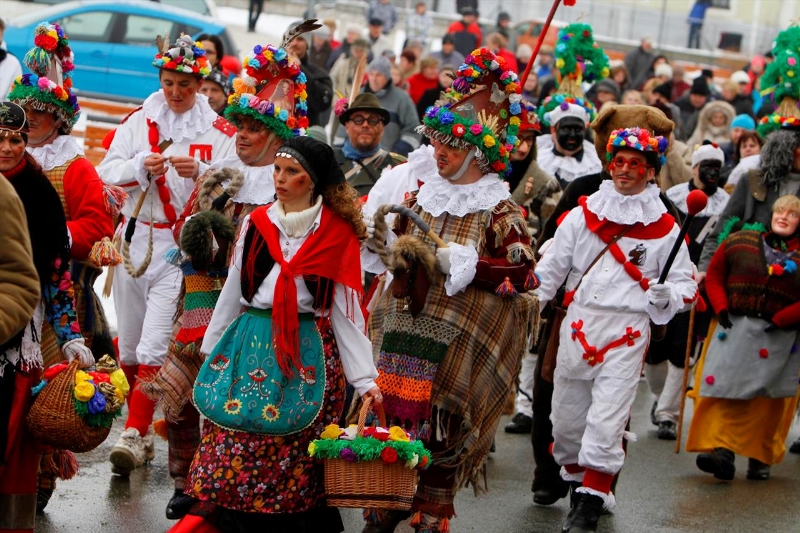
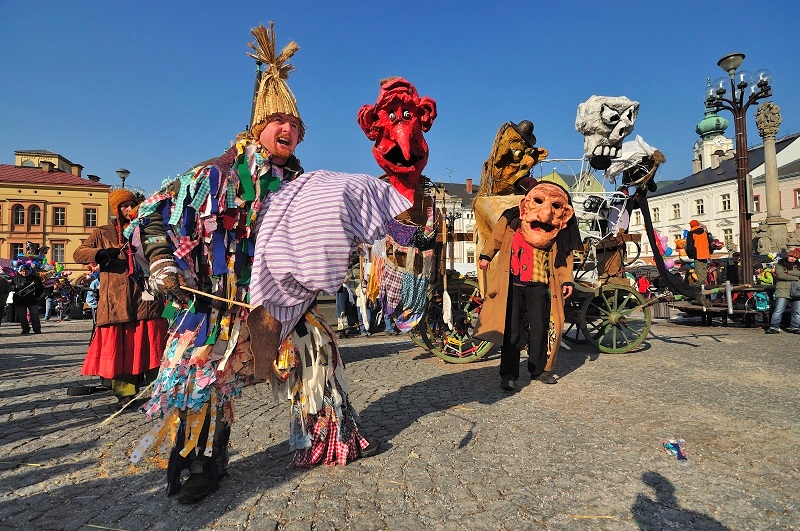
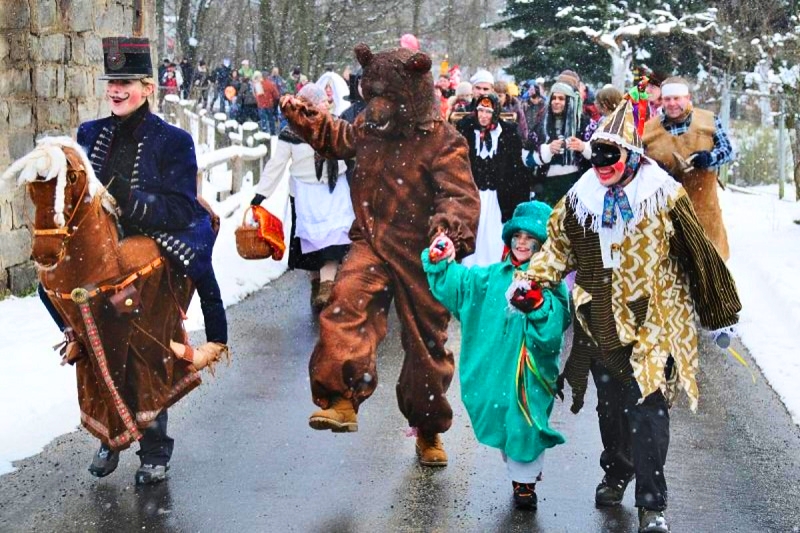
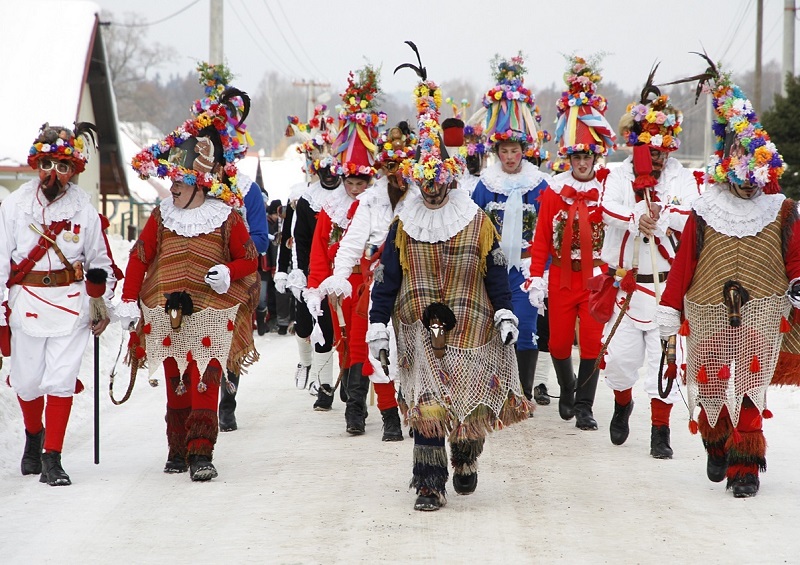
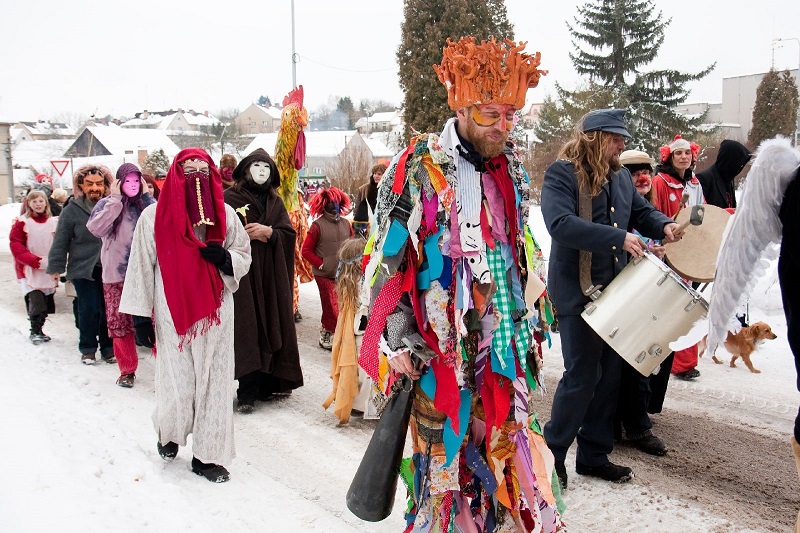
The preparations for Shrovetide are often preceded by a feast following the slaughtering of a pig. The traditional meal is roast pork with cabbage. On this day, a person was supposed to eat and drink as much as possible in order for him to have his full strength throughout the year.
The main carnival entertainment began on Shrove Sunday. First there was a sumptuous lunch, which was followed by a party with dancing, which continued until morning. And the entertainment and dancing continued on Shrove Monday.
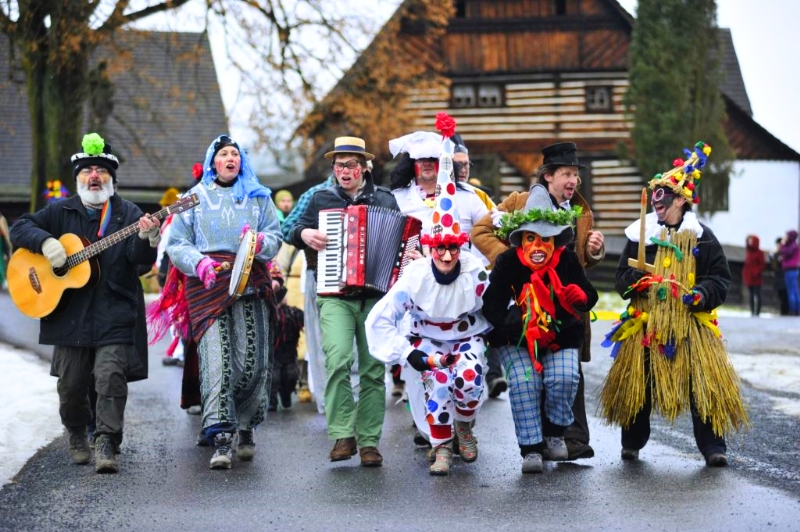
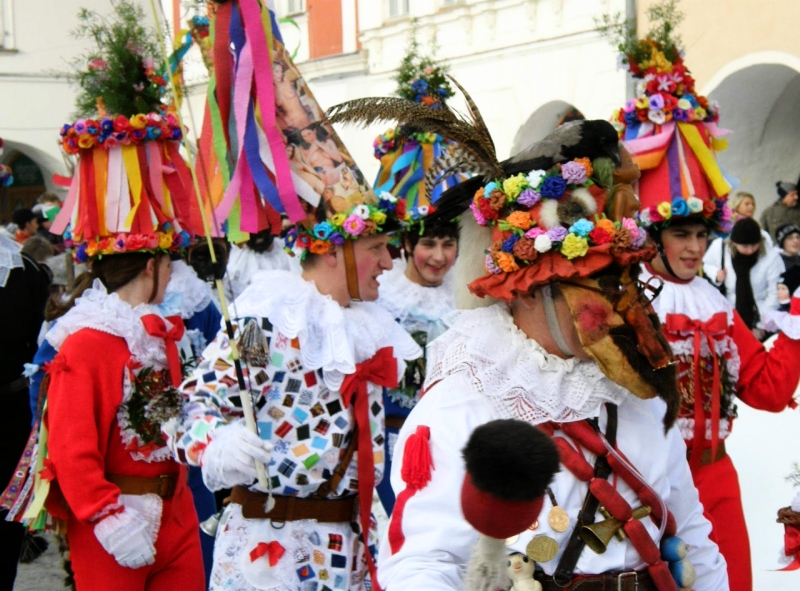
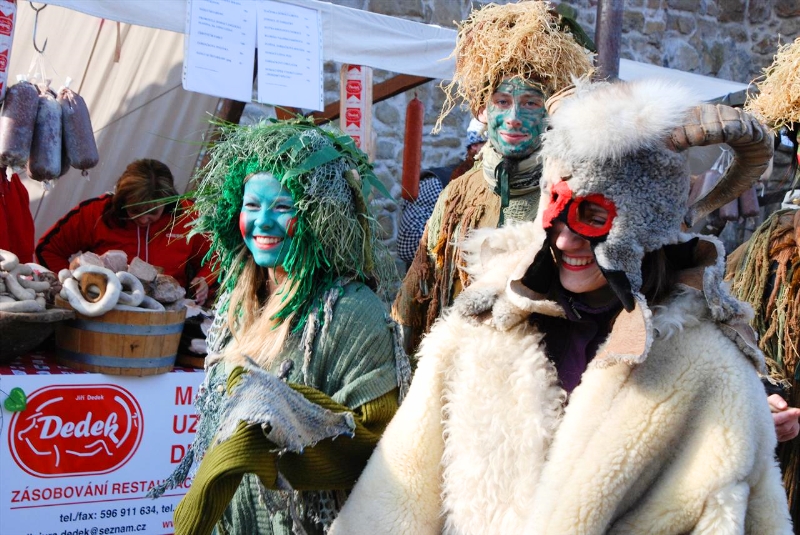
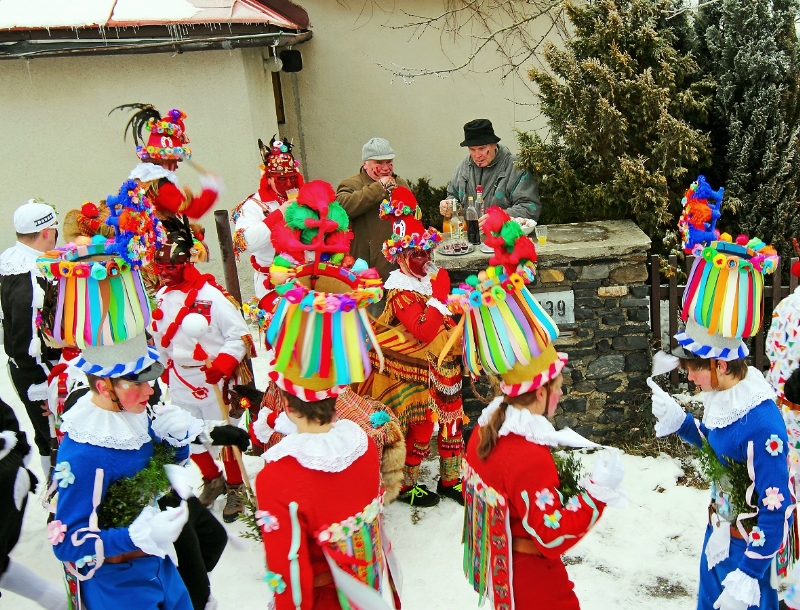
In many villages, a so-called “husbands’ ball” was held, which was only for married men and women. In many places, people also believed that the height a farmer’s wife jumped while dancing would be the height that the grain would grow the next year.
The feast culminated in Shrove Tuesday, when the masque wearing Shrovetide procession and theatre performances were held.
There are written reports of the Shrovetide dances of Bohemia and Moravia from as far back as the 13th century, but these festivities are definitely older. Many scholars link the dance of Shrovetide masques with pre-Christian pagan ceremonies.
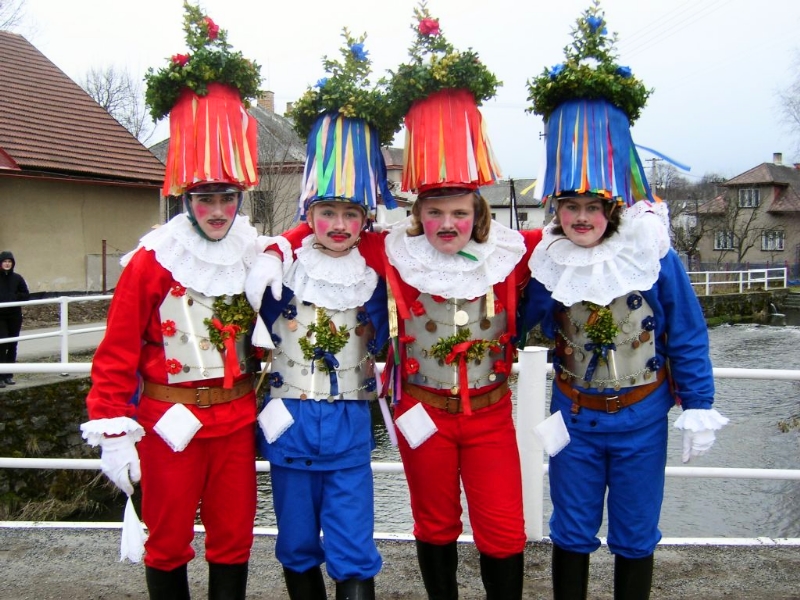
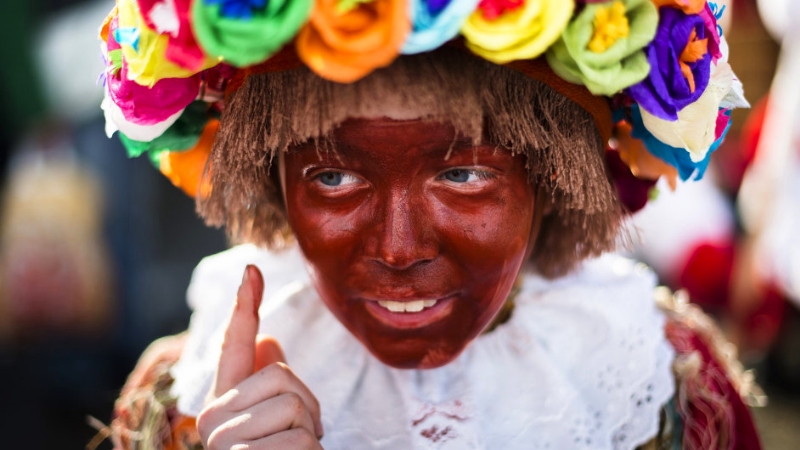
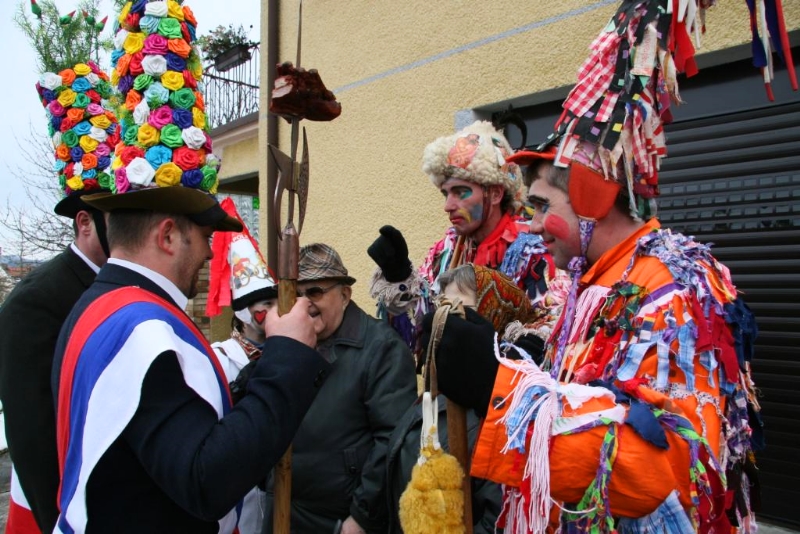
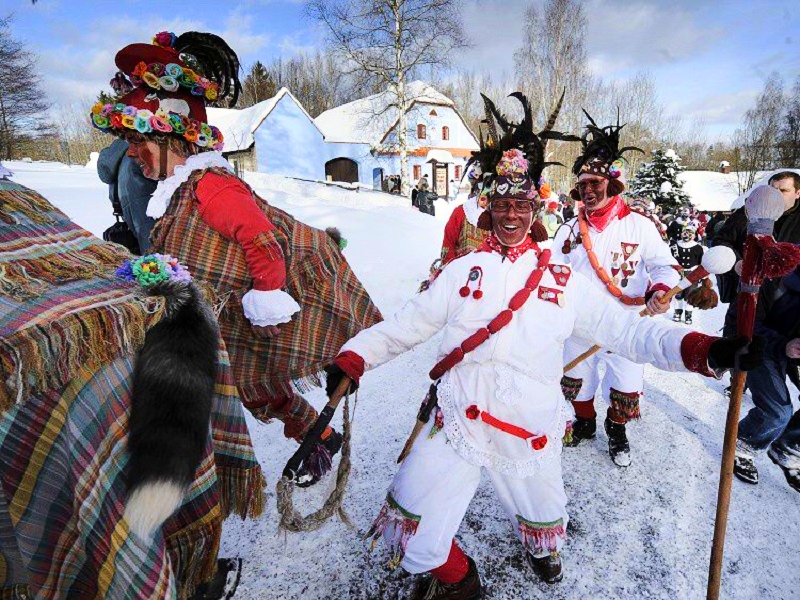
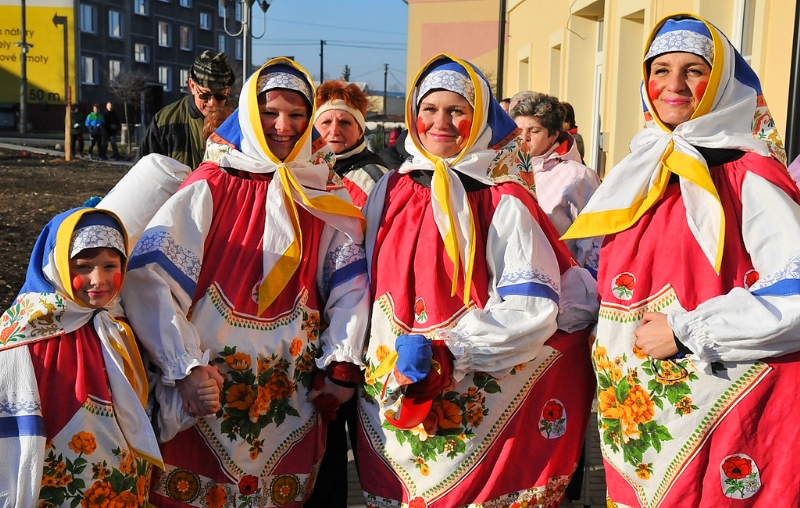
It is known that the Bohemian kings of this period also prepared feasts, to which they not only invited nobles, but also later invited representatives of the city burghers.
Shrovetide (Masopust) processions are still part of folklore celebrations in the Czech Republic.
One hallmark of Shrovetide is the merrymaking associated with Carnival. On the final day of the season, Shrove Tuesday, Christians, such as Anglicans, Lutherans, Methodists and Roman Catholics, “make a special point of self-examination, of considering what wrongs they need to repent, and what amendments of life or areas of spiritual growth they especially need to ask God’s help in dealing with.”
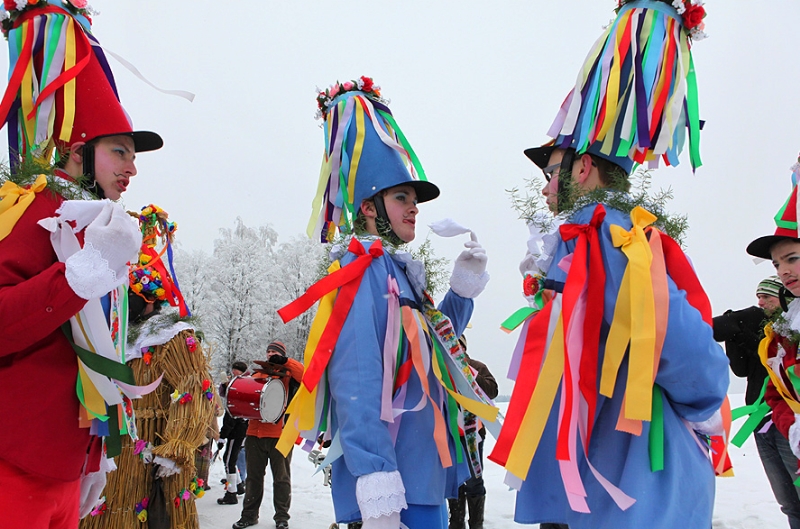
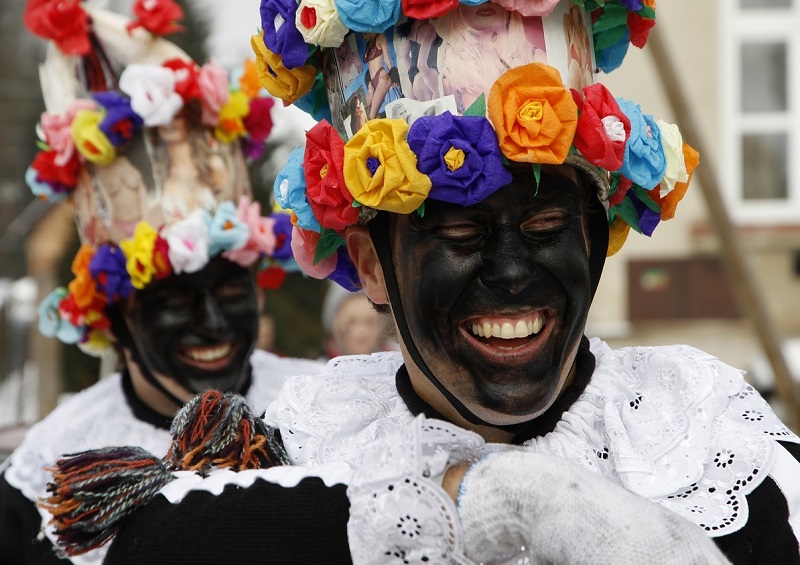
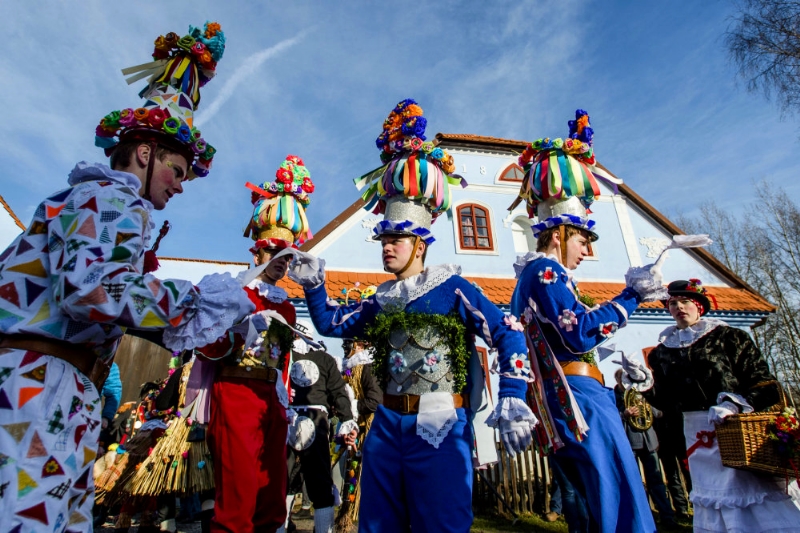
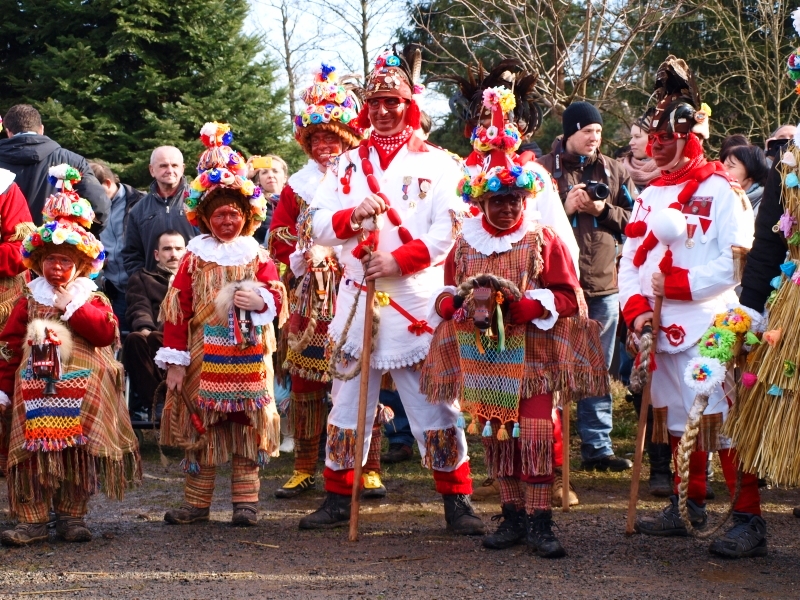
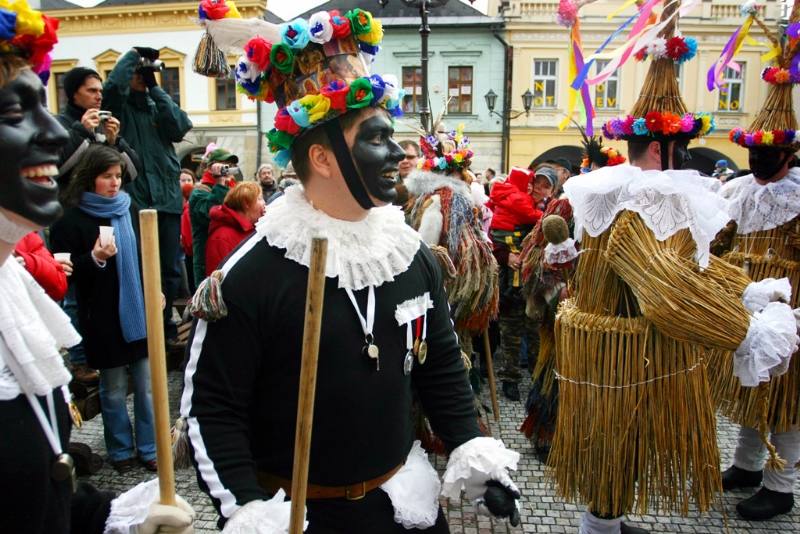
Village men and boys, disguised in masks that depict traditional characters (red masks for boys and black for married men), go from door to door around the village, accompanied by a brass band.
The procession stops at each house and four of the men perform a ritual dance, with the householder’s permission, to secure a rich harvest and prosperity for the family.
In return, the masked men receive treats and collect a fee.
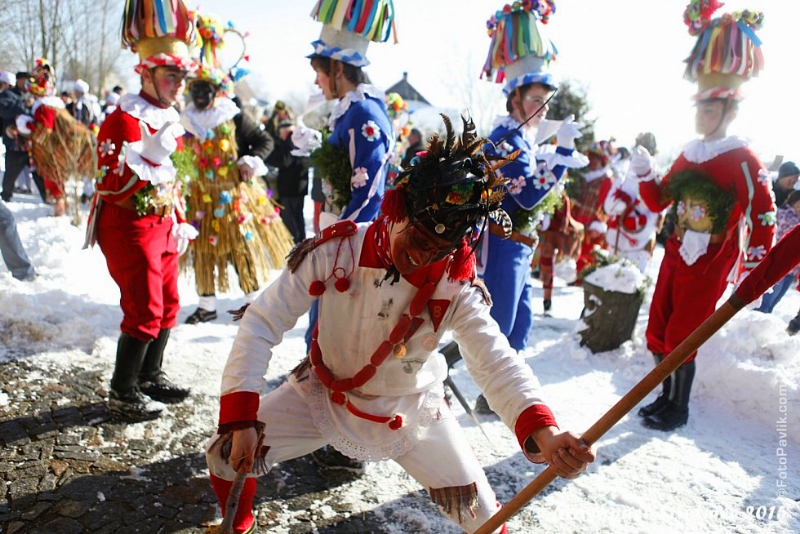
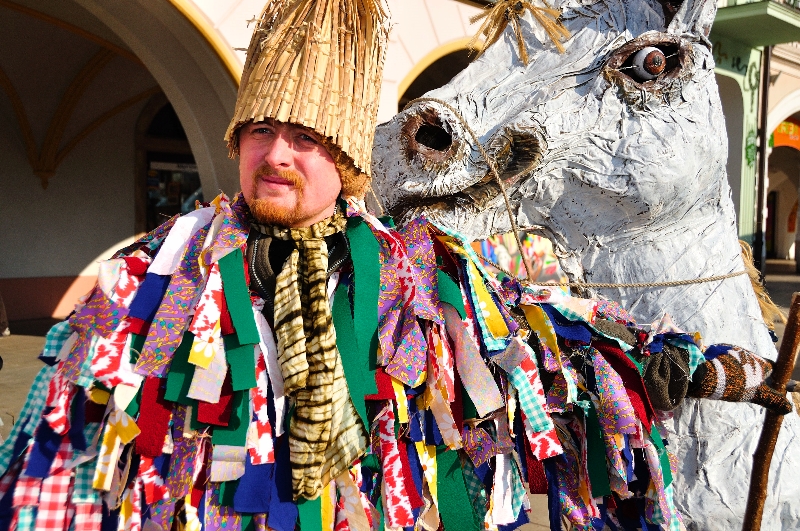
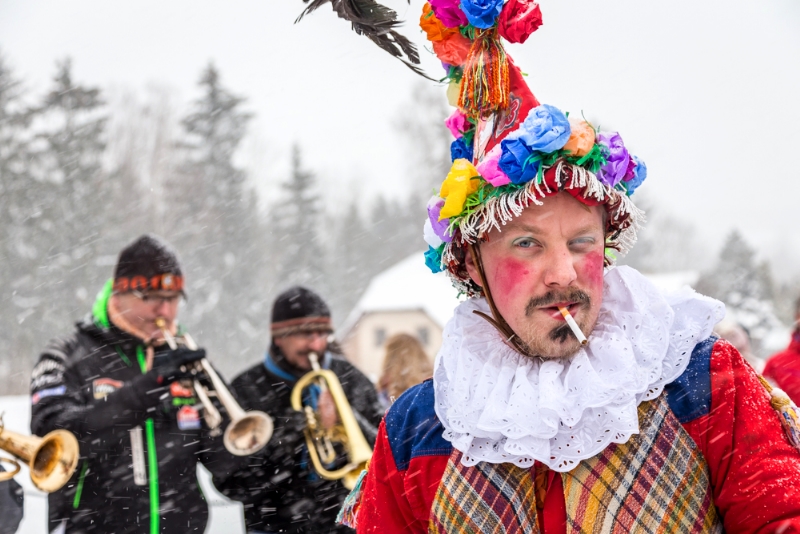
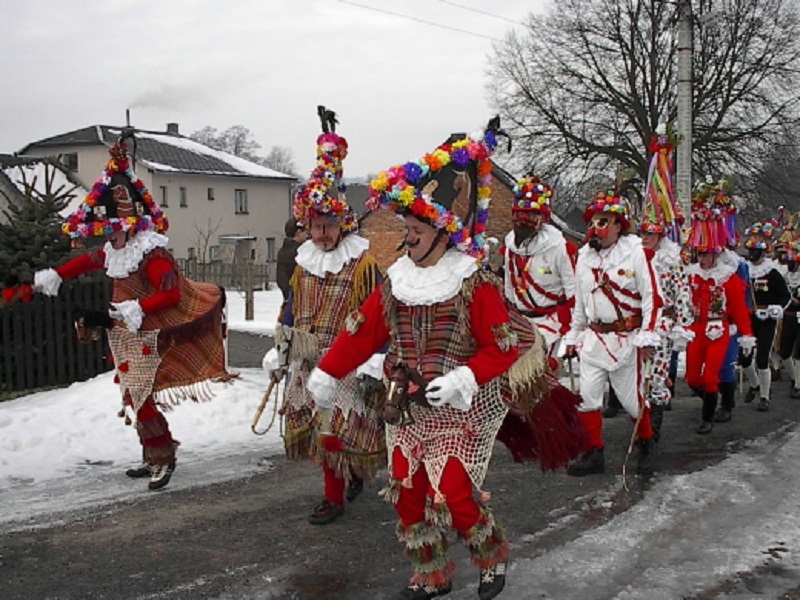
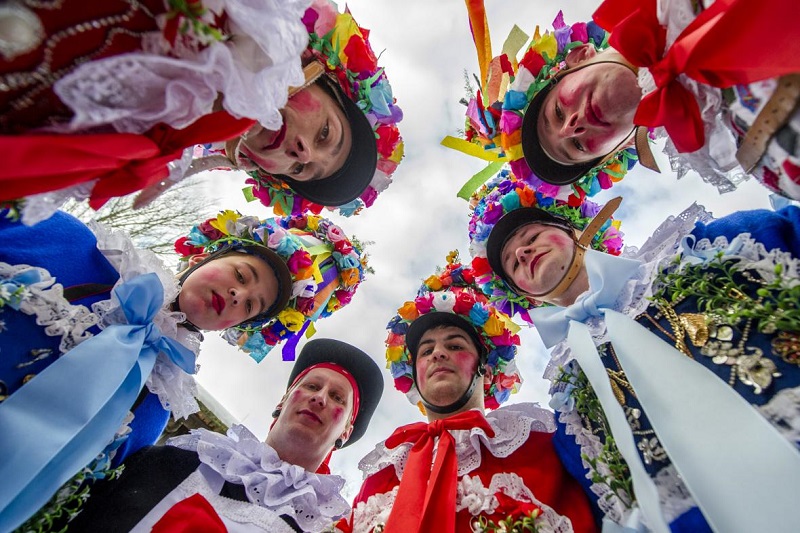
A symbolic ‘Killing of the Mare’ ritual takes place after the last house has been visited, during which a mare is condemned for its alleged sins and a humorous and topical testament is read out.
Following the ‘execution’ the mare is revived with alcohol, signalling the commencement of a dance as the masks frolic with onlookers.
The Shrovetide procession – banned in turn by the Catholic Church in the eighteenth and nineteenth centuries and by the socialist government in the twentieth century – play an important role in securing cohesion within the village community.
Young people and children help with the preparations and parents make copies of traditional masks for their sons.
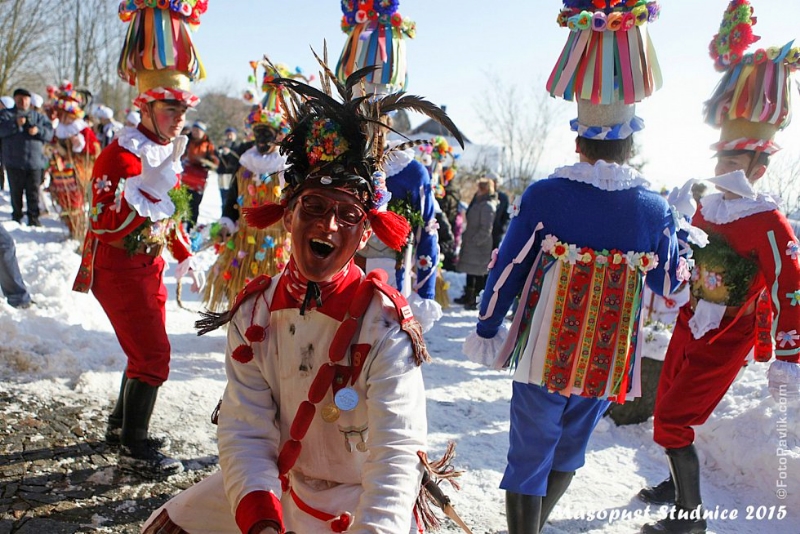
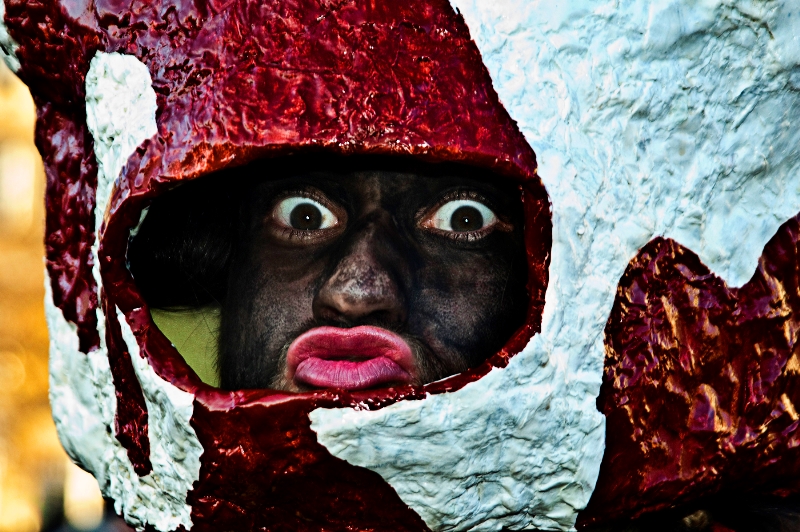
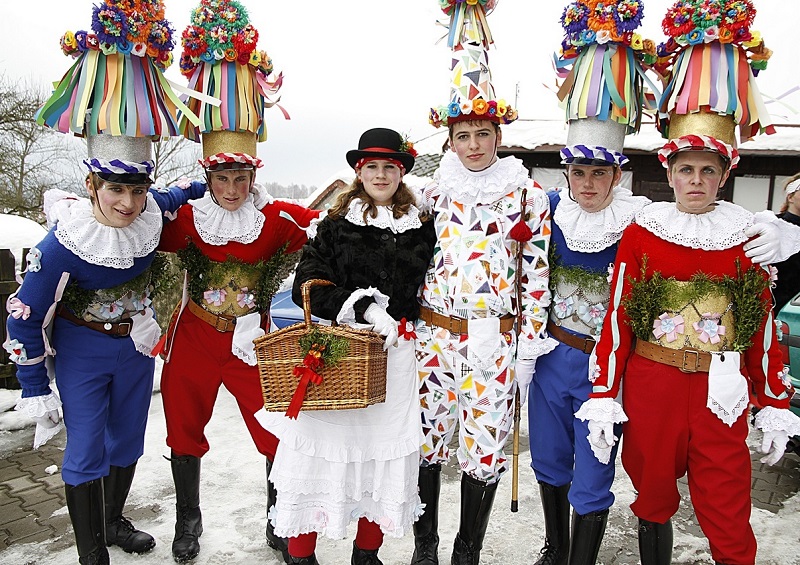
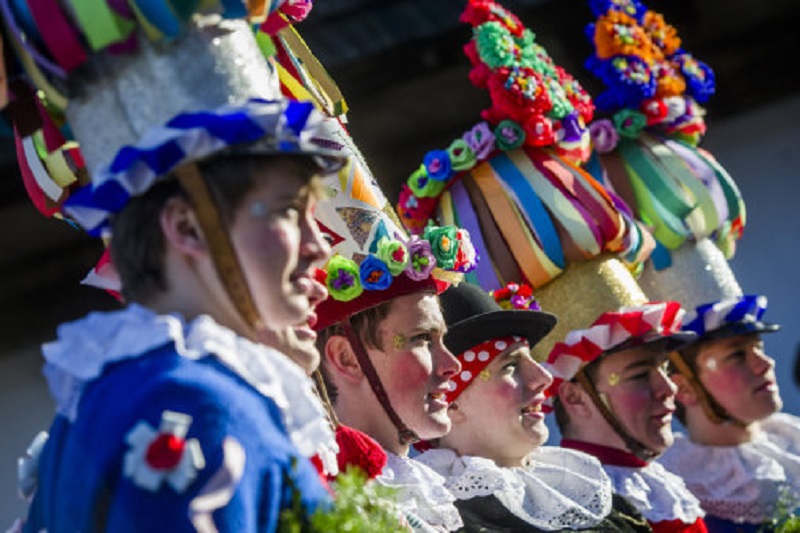
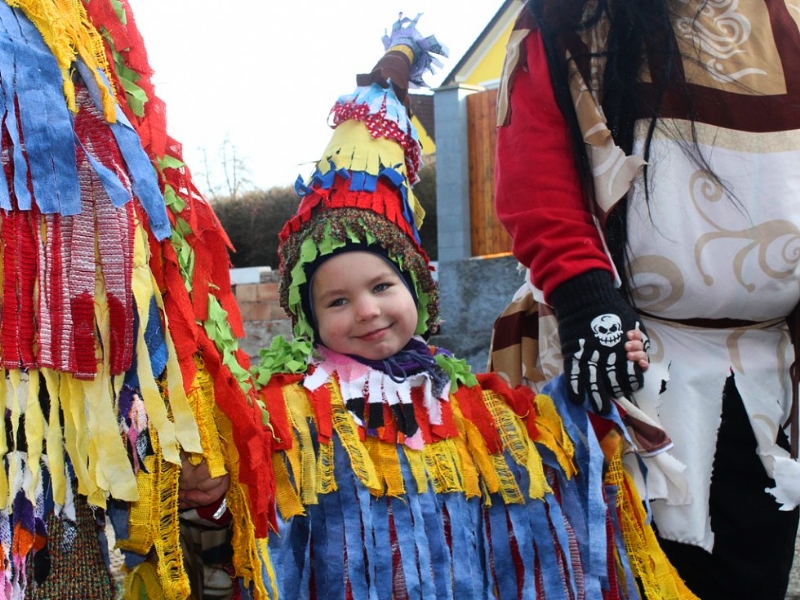
Can You Smell the Sweets?
What exactly is the origin of these unique Shrovetide processions? It was simply a time of great feasting, during which people ate to their heart’s content. That’s because it was followed by the forty-day fast of Lent. Therefore, before the fasting period began magnificent banquets were held, dances took place in towns, and rich feasts were enjoyed in villages. To this day, during the Shrovetide processions you can taste a wide variety of delicacies, from excellent sweet cakes and sausages to black pudding and pork crackling, which ideally should be washed down with homemade plum brandy.
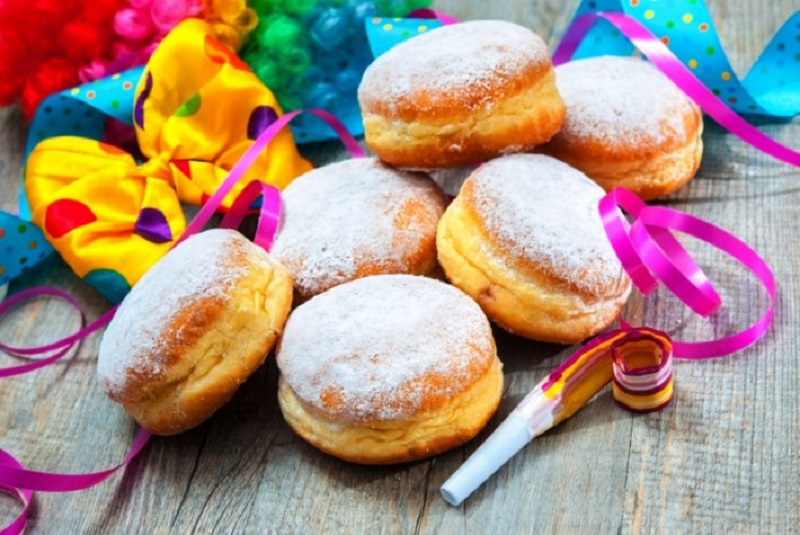
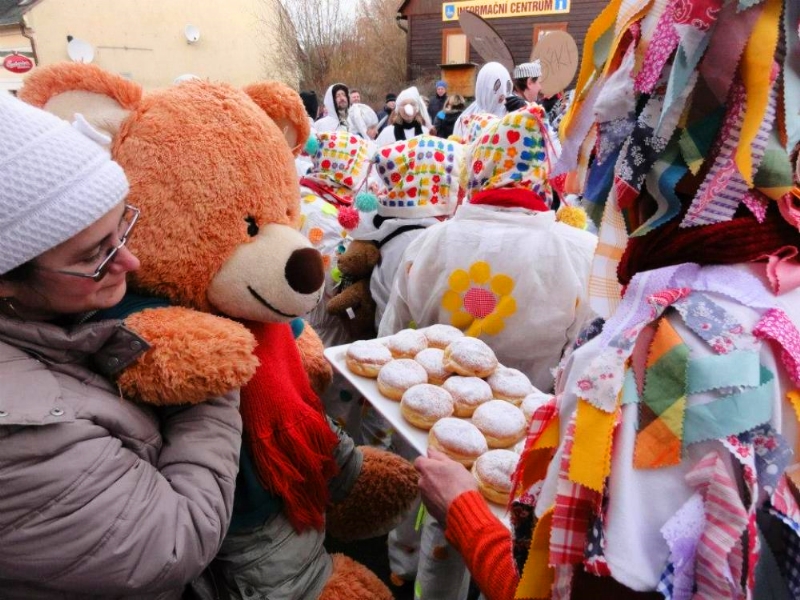
Join the Procession
Who are you most likely to encounter in the Shrovetide procession? The main characters are the Turk, “little wife”, straw man, knacker with a mare, and the chimney sweep. Also indispensable are a bear, a Jew and a master of ceremonies, who appeals to each homeowner for permission for the procession to stop there.
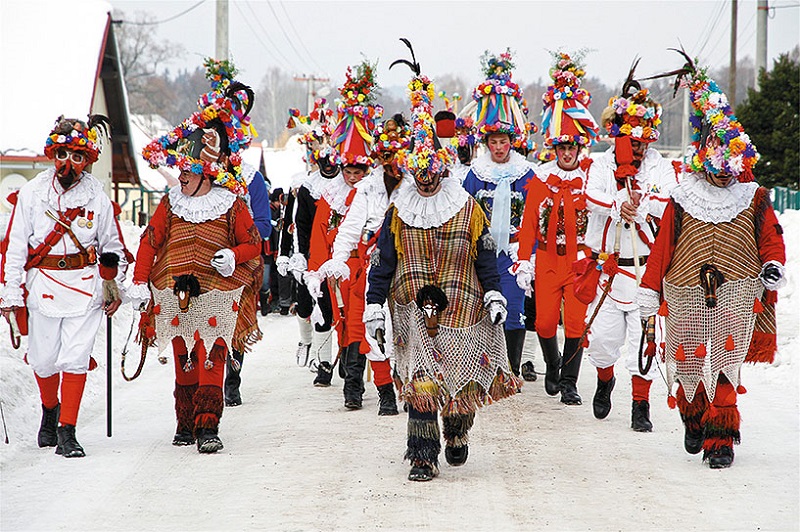
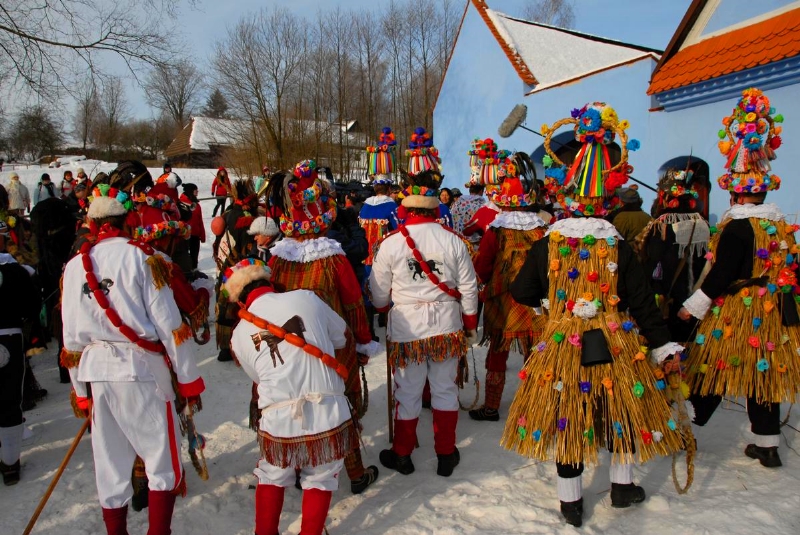
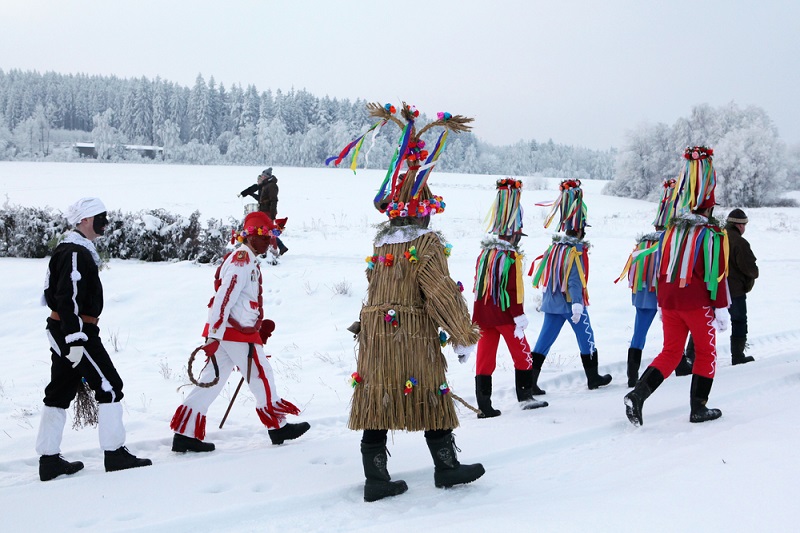
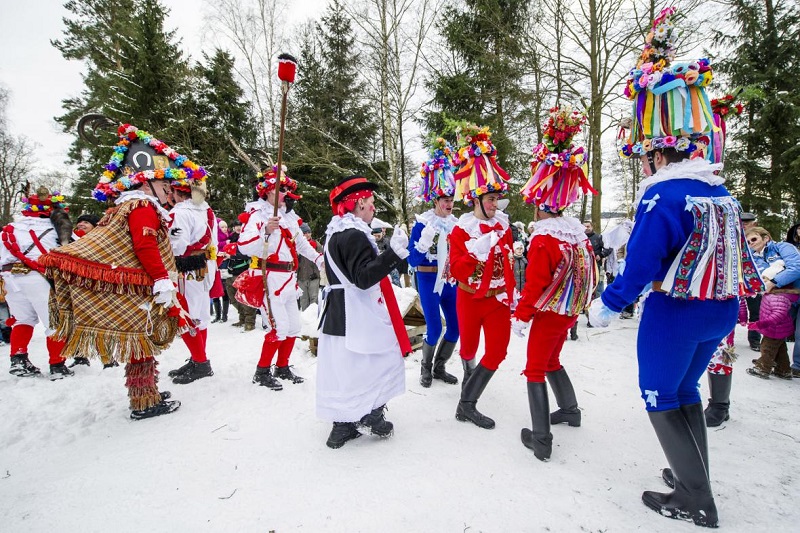
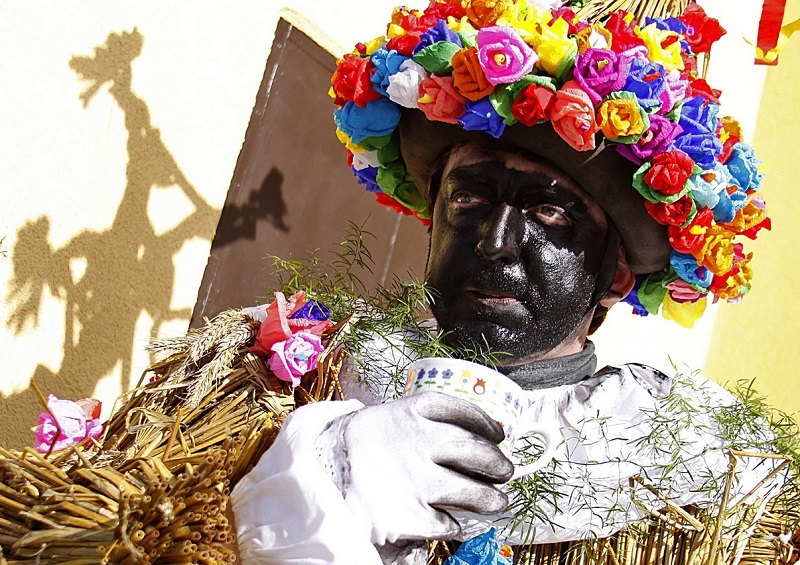
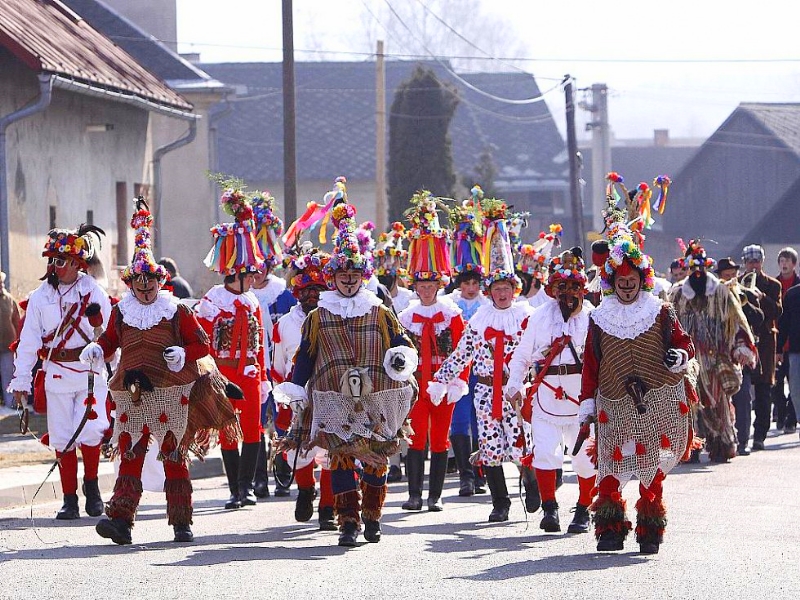
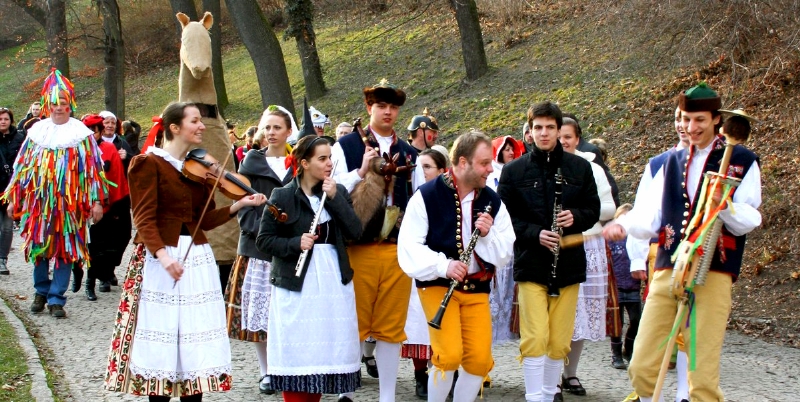
Bring the Children
Shrovetide processions are a wonderful spectacle, not just for adults but also for children. The fascinating jumble of colourful costumes, making a bright contrast with the surrounding white of the snow, is simply an experience you’ll never forget.
And when you taste some of the carnival delicacies and hear the rhythm of the jolly songs, you will leave all your worries behind.
Here’s a live video for you to enjoy…
Notes:
Septuagesima (in full, Septuagesima Sunday) is the name for the ninth Sunday before Easter, the third before Ash Wednesday. The term is sometimes applied also to the period commonly called Shrovetide (the Pre-Lenten Season) that begins on this day and ends on Shrove Tuesday, the day before Ash Wednesday, when Lent begins. This year, the date is February 12th.
Shrove Monday Shrove Monday, sometimes known as Collop Monday, Rose Monday, Merry Monday or Hall Monday, is the Monday before Ash Wednesday every year. A part of the English traditional Shrovetide celebrations of the week before Lent, the Monday precedes Shrove Tuesday. As the Monday before Ash Wednesday, it is part of diverse Carnival celebrations which take place in many parts of the Christian world, from Greece, to Germany, to the Mardi Gras and Carnival of the Americas.
Shrove Tuesday is exactly 47 days before Easter Sunday, a moveable feast based on the cycles of the moon. This year it falls on February 28th.
One more…
Sources: UNESCO, Wikipedia, Czech Tourism, Prague Guide.
If you have not already subscribed to get TresBohemes.com delivered to your inbox, please use the form below now so you never miss another post.
Remember, we rely solely on your donations to keep the project going.
Become a friend and get our lovely Czech postcard pack.


